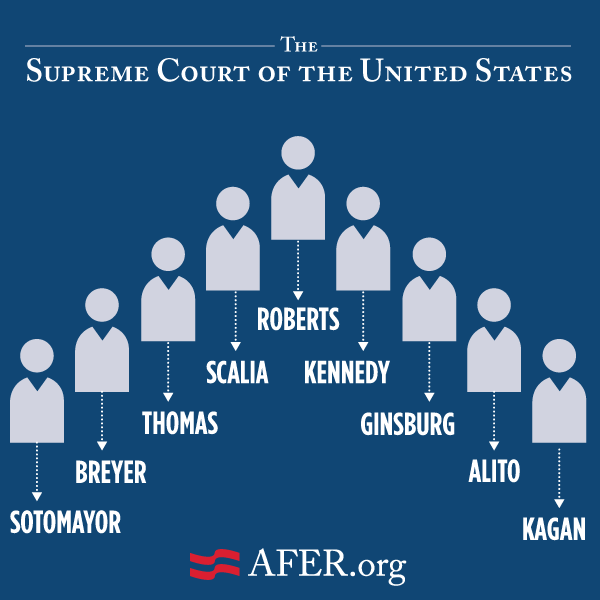An article published by the American Foundation for Equal Rights gives excellent insight into how the Supreme Court Judges proceed, as they hear arguments around the California Proposition 8 case on Tuesday 26th at 10am and the Defence of Marriage Act on Wednesday, taking place at the Supreme Court in Washington DC.

The nine Justices are seated by seniority. The Chief Justice occupies the center chair, the senior Associate Justice sits to his right, the second senior to his left, and so on, alternating right and left by seniority.
Following Along
Audio of the proceedings will be made available shortly after oral argument concludes on each day since cameras and love updates are prohibited from inside the courtroom. The Supreme Court has said that audio will be released by 1 p.m. EDT on Tuesday and 2 p.m. EDT on Wednesday. Since seating inside the Court is extremely limited, it is on a first come basis.
Proceedings
Shortly before 10:00 a.m., the Justices will meet in the Robing Room. This is where they will all shake hands and don their robes.
At 10:00 a.m., oral argument will begin. As the Justices enter the courtroom, the Marshal of the Court will intone:
The Honorable, the Chief Justice and the Associate Justices of the Supreme Court of the United States. Oyez! Oyez! Oyez! All persons having business before the Honorable, the Supreme Court of the United States, are admonished to draw near and give their attention, for the Court is now sitting. God save the United States and this Honorable Court!
The Chief Justice will call the case and invite Charles J. Cooper, attorney for the Proponents of Proposition 8, to the lectern. He has 30 minutes to make his argument.
Once Mr. Cooper has concluded, the Chief Justice will invite AFER lead co-counsel Ted Olson to the lectern which will begin his 20 minutes to make his argument. He may choose to reserve some of his time for a rebuttal after the argument for the United States has been compeated.
After Mr. Olson has completed his argument, the Chief Justice will invite Solicitor General Donald B. Verrilli, Jr. to the lectern. The Solicitor General has 10 minutes to make his argument for the United States as amicus curiae, or “friend of the Court”. He will be speaking in support of AFER’s Plaintiffs.
If Mr. Cooper reserved time for rebuttal, he will then have the remainder of his time to address the Court.
The case is submitted for consideration once the oral arguments have been completed. The Justices are expected to vote at their private Conference on Friday, March 29. A final decision should be published by the end of June.
The Cases
The U.S. Supreme Court is considering two cases that deal with marriage equality for gay and lesbian Americans this week.
On Tuesday, March 26, the Court will hear oral argument in Hollingsworth v. Perry,. This is AFER’s federal constitutional challenge to California’s Proposition 8. Two couples, Kris Perry & Sandy Stier and Paul Katami & Jeff Zarrillo, are represented by Ted Olson and David Boies. Mr Olson will argue that Proposition 8 violates the Due Process and Equal Protection Clauses of the Fourteenth Amendment to the Constitution. Learn more about the Perry case >
On Wednesday, March 27, the Court will hear oral argument in United States v. Windsor, a challenge to the Defense of Marriage Act (DOMA). This is the 1996 law that prevents the federal government from recognizing the legal marriages of gay and lesbian couples in states with marriage equality. The case came about because Edie Windsor, an 83-year-old widow, was forced to pay $363,000 in estate taxes after her wife died. This is a tax she would not have had to pay if she was married to a man. Ms. Windsor claims that DOMA violates her right to equal protection of the laws and is represented by the ACLU.